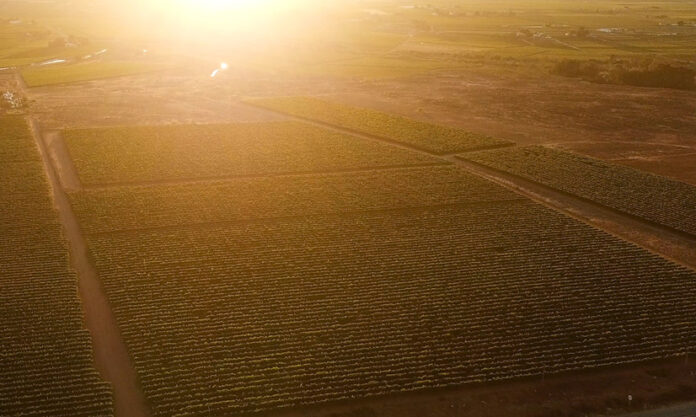By Peter Setou
Land Reform: It has been widely argued that bureaucratic red tape, malfeasance, resourcing challenges, poor planning and a lack of political will have prevented many land reform beneficiary communities from turning their newly acquired assets into sustainable livelihoods or into a buffer against deepening poverty.
Since 1994, South Africa’s government has pursued an ambitious land reform agenda aimed at redressing historical injustices and correcting racially skewed patterns of land ownership through a three-pronged strategy of restitution, redistribution and tenure reform. While there have been pockets of success in South Africa’s land reform journey, the reality is that the programme holds far greater potential if implemented effectively.
A rich and increasing body of research has found that the land reform programme has immense potential to elevate many impoverished communities out of the clutches of poverty, revitalise largely dormant rural economies and stimulate entrepreneurship.
According to the latest General Household Survey conducted by Stats SA, approximately 24 million people in the country are receiving government grants and this state endowment remains the main source of income for almost one-quarter (23%) of all households nationally.
The escalating poverty figures are a cause for alarm, considering that just over 30% of South Africa’s population resides in rural areas. Equally disturbing, any public discourse on the land reform programme is characterised by reports and anecdotes of dismal failure and the degeneration of once productive land into disuse.
A detailed study titled: “An analysis of livelihoods of land and agrarian reform beneficiaries: Towards integrated and comprehensive post-settlement support programmes, by Dr Lubabalo Mbekeni of the University of the Western Cape, examined why some beneficiary communities have not managed to use their land productively, after lodging a successful claim.
Focusing his research on the Ebenhaeser community on the West Coast, Mbekeni’s research found that while government programmes provided significant assets, these interventions were often undermined by fragmented and uncoordinated approaches by government departments, both at and between national, provincial and local levels. “This silo-based approach was found to lead to duplication and waste of resources, hindering the overall effectiveness of the support programmes,” Mbekeni argues.
These impediments to a successful land reform programme drew the attention of the World Bank. The institution found that where land has been transferred through the land reform programme, “it appears to have had minimal impact on the livelihoods of beneficiaries, largely because of inappropriate project design, a lack of necessary support services and shortages of working capital, leading to widespread underutilisation of land. There is no evidence to suggest that land reform has led to improvements in agricultural efficiency, income, employment, or economic growth.”
Government has also conceded their shortcomings in successfully driving and implementing the land reform programme over the years. Minister of Land Reform and Rural Development, Mzwanele Nyhontso, said although government had made progress, inequality in land ownership remained stark. “Millions of hectares of land have been transferred, the rights of many families have been secured, and communities have seen their ancestral land returned to them. And yet we know it is not enough. Poverty and food insecurity remain widespread in rural areas.”
While his department has cited funding shortages as the barrier to accelerating the land reform programme and ensuring that claimant communities are adequately supported, this argument has been found wanting, given systematic failures such as reliance on manual systems, poor coordination between the various Departments, the Commission on Restitution of Land Rights, CPAs and municipalities, inadequate post-settlement support, and lack of visible consequence management for ongoing underperformance. Some of these systemic failures were highlighted by the Motlanthe Report.
Throwing money at the challenges that beset the land reform programme will not dissipate them. For as long as these systemic challenges persist, no amount of funding can influence the direction of the land reform programme or change the fortunes of the struggling beneficiaries who continue to wallow in squalor and deprivation.
Vumelana Advisory Fund, a non-profit organisation that works with land reform beneficiaries to help them put their land into productive use, largely agrees with Dr Mbekeni on the remedial interventions that have to be put in place. They include expediting the finalisation of land claims, coordinating government support packages across all spheres and departments, ensuring access to water, ditching the lease model in favour of awarding title deeds to beneficiaries and providing technical, administrative and managerial skills training to beneficiary communities.
Similarly, Vumelana echoes the recommendations tabled by the World Bank which identified the absence of any viable small-farmer development pathway, which would enable the millions of households residing in the communal areas and on commercial farms to expand their own production and accumulate wealth and resources in an incremental manner.
Moreover, we firmly believe that a sustained focus on implementation, resource mobilisation, post settlement support, actively promoting partnerships between beneficiaries and the private sector and timely policy adjustment will put the land reform on a good footing, unlock the potential of the land assets for the economic benefit of the communities and unleash the potential and entrepreneurial spirit of the beneficiary communities.
Much more will be required for the land reform programme to contribute significantly to economic growth and to the redistribution of wealth and opportunities to much of the population, especially in rural areas.
Peter Setou is Chief Executive of the Vumelana Advisory Fund, a non-profit organisation that works with land reform beneficiaries to help them put their land into productive use.








